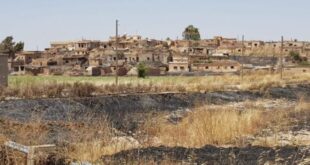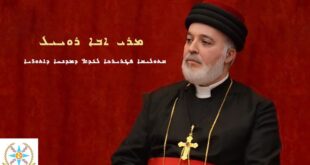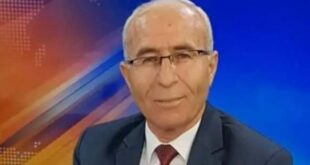By Büsra Ipekçi
Mardin – todayszaman — Mardin’s Tur Abdin region is home to the Mor Jacob Monastery, with an early history that is the stuff of legend: The building serves the oldest Syriac Christian community in Turkey.
The southeastern village of Barýþtepe, formerly known as Salah or Saleh, is a little Syriac village in the Tur Abdin region in Nusaybin, a district of the southeastern province of Mardin. Tur Abdin is Syriac for “the mountain of the servants of God” and refers to the numerous ascetics based in the region after the advent of Christianity there.
This plateau, which is on the border with Iraq, is home to the oldest surviving Syriac Orthodox Christian community in Turkey and also to the Monastery of Mor Jacop the Recluse, known as Mor Yakub Manastýrý in Turkish and Dayro d’Mor Ya’qub Hbsihiyo in Syriac. Mor is a Syriac word that means “saint” and is also used as an honorary title for living bishops.
Once you enter the village the monastery is visible from the road. There are always children playing around the building, which acts as both a school and playground. The monastery’s school teaches classes in the Syriac language and religion, which the children attend after their classes at regular school are finished. Little is known about the history of the monastery, and its origins remain shrouded in mystery, although it is thought to be named after to its founder Mor Jacob and to have been built in A.D. 419.
Who is Mor Jacop?
Said to have been born in or around the year 330 in Egypt, Mor Jacob was initially a monk of the Monastery of Bishoi in Wadi al-Natrun. During the reign of Julian the Apostate (361-363) he fled Egypt and traveled to Antioch by sea, eventually arriving in Amidia (modern Diyarbakýr). From there he went to Salah and founded a monastery in 419 in the Tur Abdin region. He is said to have performed many miraculous works, including curing the sick, healing the lame and making a 1-week-old baby speak.
It is believed that there was once a Persian sanctuary where the monastery is located, and the remains of ancient arches are still visible within the monastery complex. According to some accounts, at the end of the fourth century a Persian commander occupied the region and came to the sanctuary to make a sacrifice to the gods. There he came upon a group of Syriacs: Mor Bar Shabo, with whom Mor Jacop spent some time in Mesopotamia, and his group of 11 disciples. The Persian killed them, making them martyrs to their faith. Mor Bar Shabo is thought by some to have been Mor Jacop’s mentor.
It is in this very place that Mor Jacob settled. When he died in 421 his disciple Mor Daniel remained there, and in time the monastery became home to hundreds of monks. It even became necessary to enlarge the monastery due to its growing number of residents. Local villagers were evidently helpful in this, and there is a list of benefactors and their donations inscribed above a door in the complex. Other inscriptions inside the monastery include the names of clerics, monks and patriarchs who lived and died there between 770 and 1364. The ruins lying outside the main building are said to be the remains of Mor Jacob’s hermitage. The present main church building dates back to the eighth century according to the eight inscriptions from the years 752 to 755. The monastery’s Beth Qadishe (burial area) houses the tomb of Mor Jacop.
The monastery served as the metropolitan chair for the region during the eighth century and the seat of the patriarchate set up in opposition to the Saffron Monastery in Tur Abdin region between 1364 and 1839. The monastery was abandoned in 1720 and inhabited by Kurds until Metropolitan Mor Filüksinos Zaytun of Anhil reclaimed it in 1851 and assigned a monk named Havschabo there. As for the later periods, the Mor Jacob Monastery was in use until World War I, when it fell empty, until 1965, when Abbot Yakup Tekin was assigned there by the Syriac bishop of the time, Mor Iyawennis Efrem Bilgiç.
The monastery is surrounded by gardens and also contains a contemporary-looking building, which included guest housing. A small stall sells souvenirs, but is hard to find; it is better to ask someone. The monastery, just a 15-minute drive from Midyat, provides visitors with a booklet in English, German and Syriac and containing a small map of the Tur Abdin region. Most of the Syriac Christians from Tur Abdin fled the region during the 1980s due to unrest in the border region and consequent concerns for their security, although it was their ancestral homeland. There were still nearly 70,000 in the mid 1980s, but today only around 2,500 remain, all of them served by the Mor Jacob Monastery.
Check Also
The Assyrian Democratic Organization condemns the Syrian regime’s attacks on Daraa Governorate
31-07-2021 At a time when the country is experiencing an unprecedented crisis economic, services, and …
 Assyrian Democratic Organization ADO
Assyrian Democratic Organization ADO






